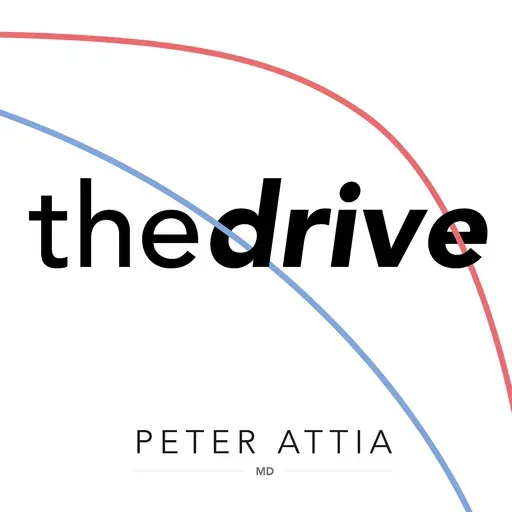
#345 ‒ Chronic pain: pathways, treatment, and the path to physical and psychological recovery | Sean Mackey, M.D., Ph.D.
The Peter Attia Drive
View the Show Notes Page for This Episode
Become a Member to Receive Exclusive Content
Sign Up to Receive Peter’s Weekly Newsletter
Sean Mackey is a professor of pain medicine at Stanford University and the director of the Stanford Systems Neuroscience and Pain Lab, where his research explores the neural mechanisms of pain and the development of novel treatments for chronic pain. In this episode, Sean joins Peter for a wide-ranging discussion on the multifaceted nature of pain—as both a sensory and emotional experience—and its evolutionary purpose as a critical survival mechanism. He dives into how pain is transmitted through the nervous system, the different types of pain, and why different individuals perceive pain so differently. Sean shares insights into pain management strategies ranging from medications like NSAIDs and opioids to neuromodulation techniques such as transcutaneous electrical nerve stimulation (TENS). Additionally, this episode explores the interplay between sleep and chronic pain and the psychological and emotional dimensions of pain, and it includes a personal story from Peter about his own experience with pain and how Sean’s expertise helped him more than two decades ago.
We discuss:
- The definition of pain, and how our understanding of pain has evolved from a simplistic body-mind separation to a nuanced biopsychosocial model [2:30]; The biological mechanisms behind how we perceive pain [9:30]; The role of consciousness in the perception of pain, and how nociception functions during unconscious states [14:30]; The four types of pain [22:00]; Using fMRI to identify objective biomarkers of pain in the brain [31:30]; The evolutionary role of pain in human behavior and survival [36:00]; How the brain processes and modulates pain signals, Gate Control Theory, the variability in individuals’ pain perception, and effectiveness of neuromodulation techniques like TENS [41:00]; The brain’s influence on pain: the role of emotion, beliefs, sleep, and individual differences in perception and tolerance [53:45]; Peter’s personal journey with chronic back pain, and how the emotional consequences of pain can be more distressing than the pain itself [1:04:30]; The pharmacology of common pain medications—NSAIDs, COX-2 inhibitors, and acetaminophen [1:09:30]; Muscle relaxants: benefits, drawbacks, and personalized strategies [1:20:30]; The definition of chronic pain [1:29:15]; The role of antidepressants in pain management [1:30:15]; Opioids: their controversial and nuanced role in pain management [1:33:45]; Alternative therapies: acupuncture and cannabis [1:54:15]; Fibromyalgia and chronic pain: clinical features, brain mechanisms, and emerging treatments like low-dose naltrexone [2:01:00]; Possible brain benefits of low-dose naltrexone (LDN) for people with mild cognitive impairment [2:15:00]; Peter’s recovery from severe chronic pain—how he went from immobility and high-dose opioids to full functionality [2:20:15]; Breaking the pain cycle: how physical rehabilitation and psychological recovery work together in chronic pain treatment [2:30:45]; Sean’s struggle with cluster headaches, and the value of knowledge, preparation, and empathy in both managing chronic pain and caring for patients [2:39:15]; and More.
Connect With Peter on Twitter, Instagram, Facebook and YouTube
